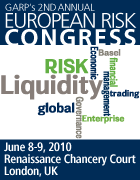Earlier this year the Basel Committee on Banking Supervision issued the paper Principles for sound stress testing practices and supervision. For full text of May 2009 final paper, Click Here.
“Stress Testing” has obviously gotten a lot of press this year; but what does it really mean?
What is commonly known as “Stress testing” could also be defined in terms of:
- Sensitivity analysis: the identification of how risky portfolios respond to shifts in relevant economic variables or underlying risk parameters or;
- Scenario Analysis: an assessment of the resilience of a portfolio, financial institution or the financial system as a whole in this age of systemic-risk-awareness to severe but plausible scenarios.
Sensitivity analysis has historically been the methodology used to quantify portfolio risk. It is however, a limited approach that might best be described as one-dimensional.
Scenario analysis is a dynamic and systematic process for analyzing possible future events by considering various alternative outcomes. It is designed to allow improved decision-making, invoking consideration of negative outcomes and implications on business strategy, franchise, risks, and rewards.
Scenario Analysis is geared towards enabling decision making on risk appetite versus risk levels, asset allocation, client and product segmentation strategies, implicit and explicit diversification tactics, and insurance/hedge considerations; institutions can also compute scenario-weighted expected returns, and improve their knowledge of the unknown i.e. potential unexpected losses and economic/regulatory capital adequacy. Scenario analysis can also be used to illuminate wild cards and “black swans”.
Scenario based stress testing defines a scenario and uses specific algorithms (ideally full revaluations) to determine the expected impact on a portfolio’s return should such a scenario occur.
There are typically three types of scenarios:
- Extreme Event: Hypothesize the portfolio (or enterprise) returns given the recurrence of a historical event. Current positions/risk exposures are combined with historical factor returns.
- Risk Factor Shock: Shock any factor in the chosen risk model by a user-specified amount. The factor exposures remain unchanged, while a covariance matrix is used to adjust the factor returns based on their correlation with the shocked factor.
- External Factor Shock: Instead of a risk factor, shock any index, macro-economic series (e.g., oil prices), or custom series (e.g., exchange rates). Using regression analysis, new factor returns are estimated as a result of the shock.
A mathematical approach to scenario analysis looks to estimate expected cash flows under various situations. The expected cash flows used to value risky assets can represent a probability-weighted average of cash flows under all possible scenarios, or, they can simply be the cash flows under a single most likely scenario. In either case the scenario based cash flows will be different from expectations:
For example, instead of doing financial projections on a "best estimate" basis, a company may do Stress Testing, against, say, the following distinct scenarios
- What happens if the equity market crashes by more than x% this year?
- What if interest rates go up at least y%?
- What if oil prices rise by 300%?
- What if half the instruments in the portfolio terminate their contacts in the 5th year?
One good definition of ‘risk’ is the extent to which actual outcomes may be different from what is expected. The creation of a robust stress testing program that includes scenario analysis will go a long way towards minimizing future surprises.
Please keep the comments coming. I will look to summarize the discussion in my next post a week or so from now. I also want to address the use of stress-testing in the real world (not just running some numbers in a vacuum that nobody can relate to!)





